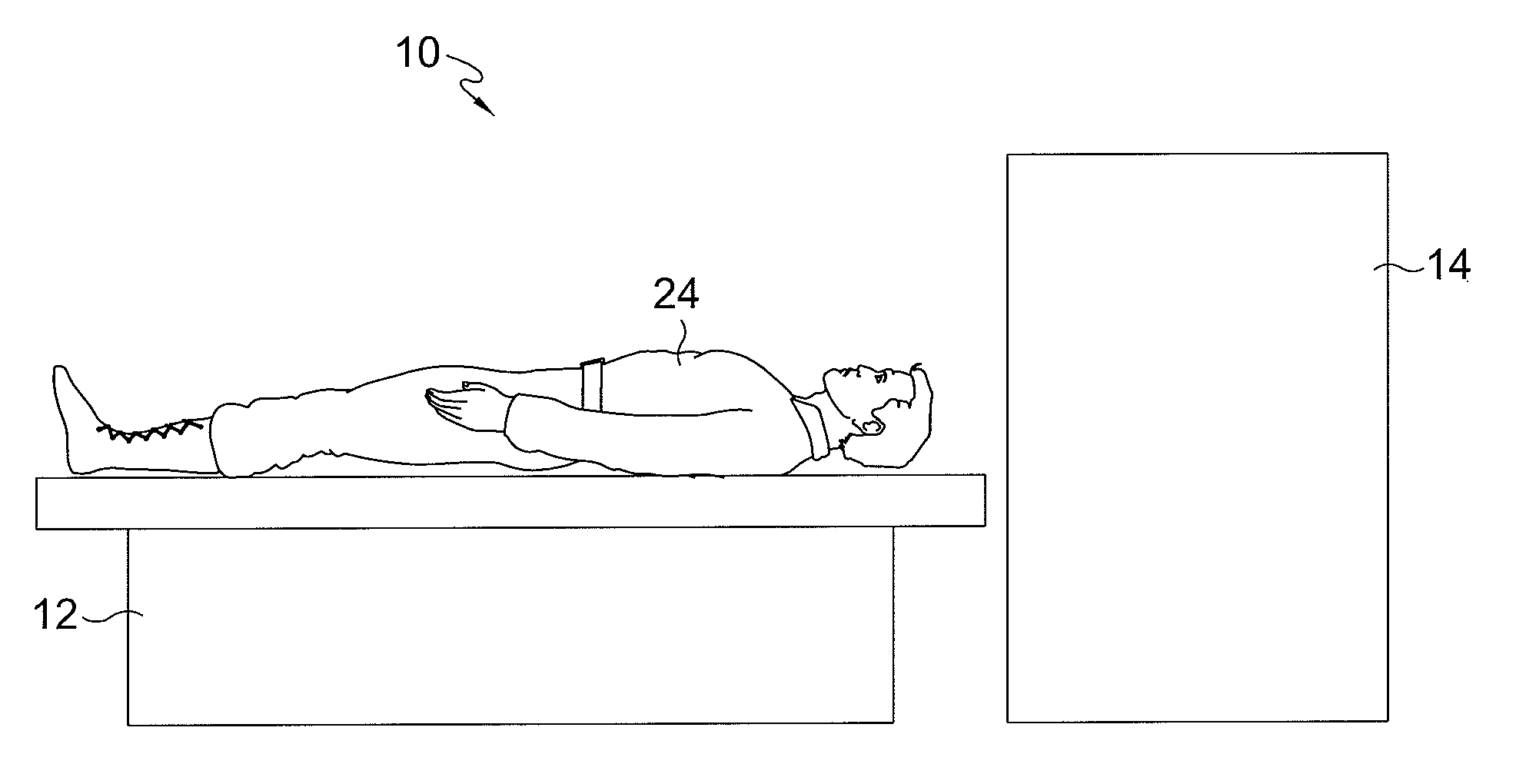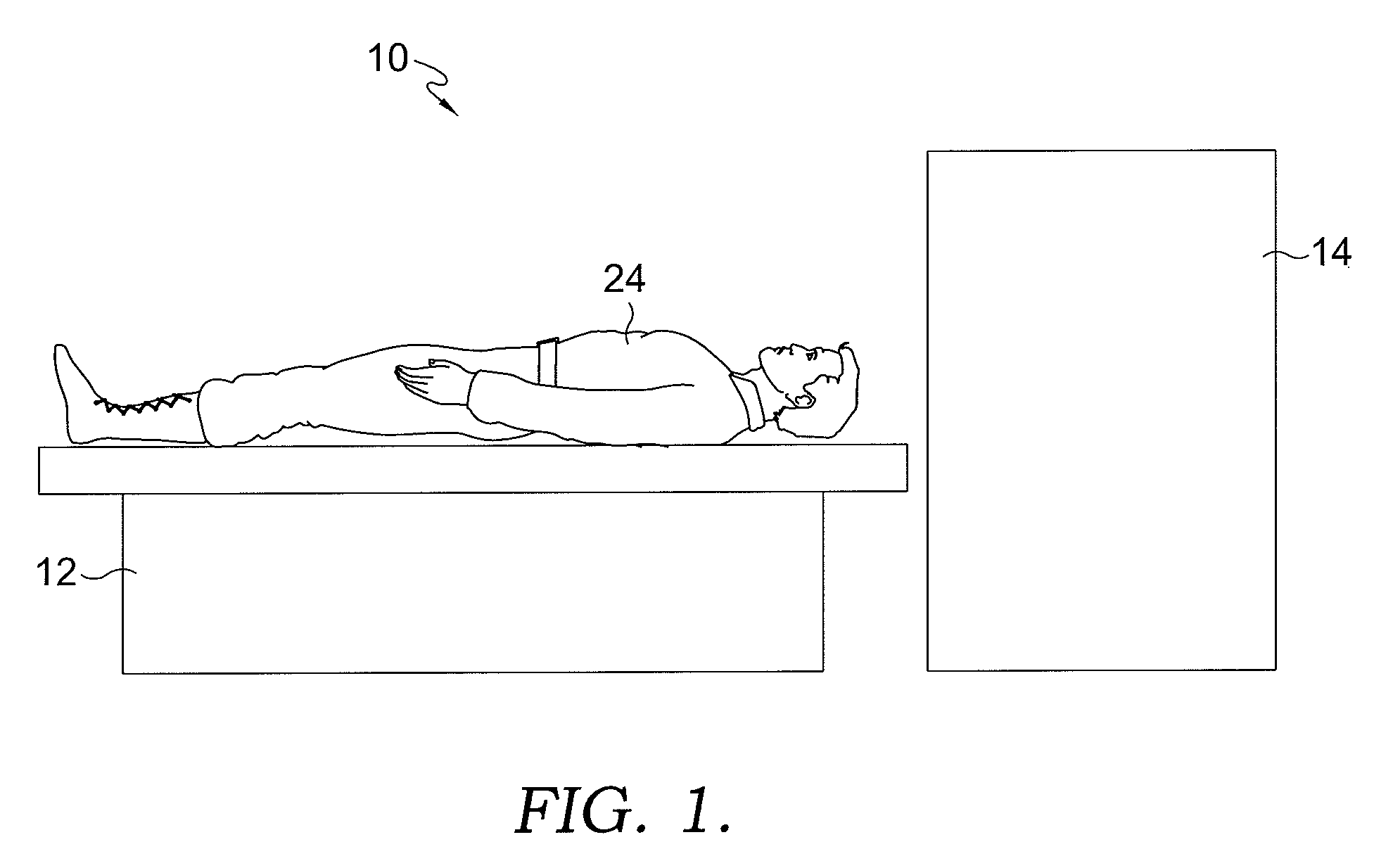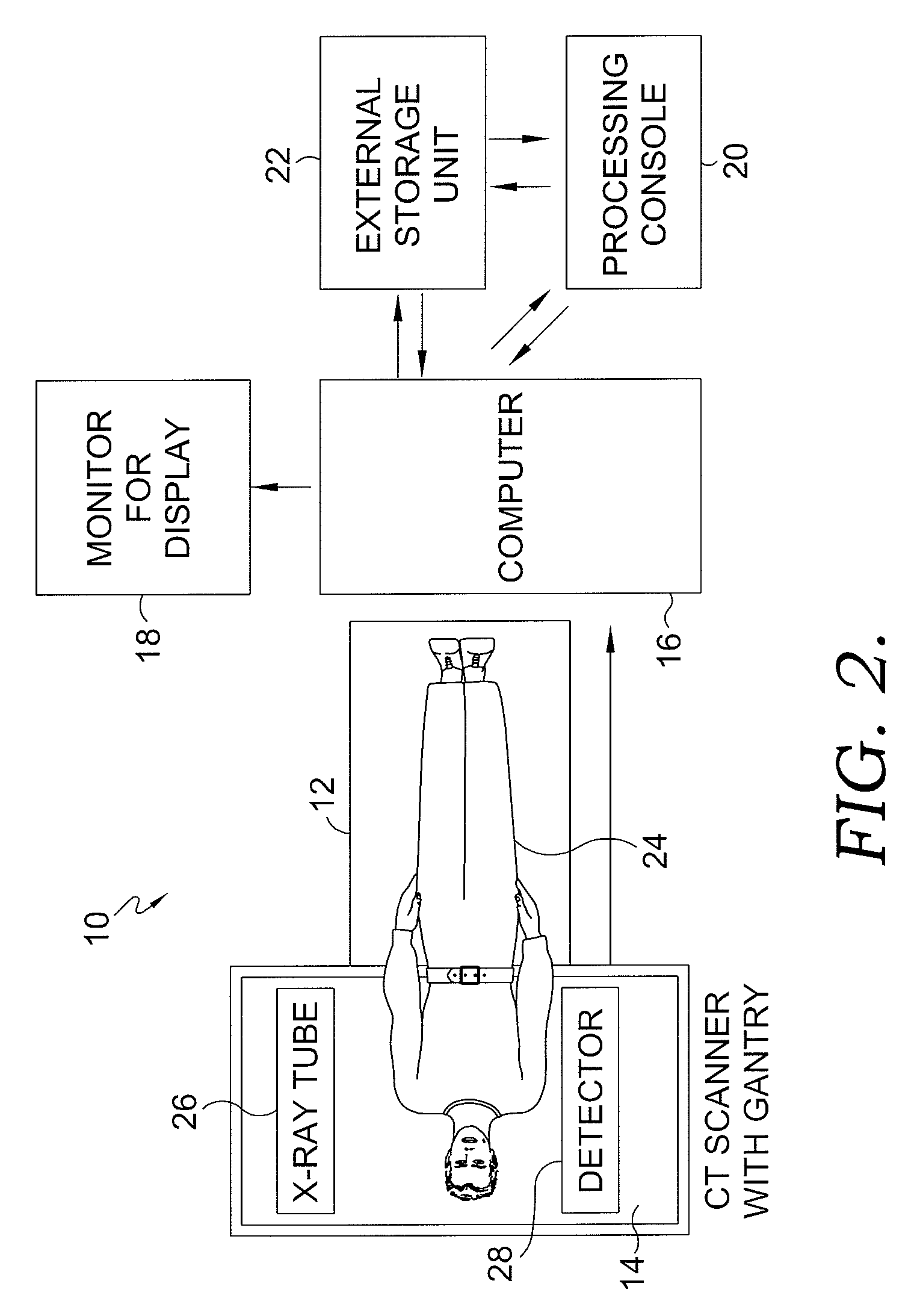Relative value summary perfusion map
a perfusion map and relative value technology, applied in the field of computed tomography (ct) perfusion imaging, can solve the problems of sudden loss of neurological function, irreversible damage of cells, and inability to accurately predict the perfusion rate,
- Summary
- Abstract
- Description
- Claims
- Application Information
AI Technical Summary
Benefits of technology
Problems solved by technology
Method used
Image
Examples
Embodiment Construction
[0030]The disclosed invention relates to a system and a method for generating map and summary values that will simply review of the CT perfusion data. The map created will primarily utilize relative difference in perfusion among different brain regions and will be displayed as a composite image displaying a plurality of parameters at once. The diagnosing and treating physicians can then more quickly and accurately evaluate the patient's condition to determine whether to initiate or withhold thrombolytic therapy. The map can also provide general prognostic information. Because the process enables quantifying brain ischemia in a summary fashion, deciding which therapy option to use on the patient is accomplished more easily and faster. Further, the process is able to provide basic prognostic information regarding the degree of current brain injury and amount of injury that can exist if adequate perfusion is not restored with more accuracy than can be accomplished with the prior art me...
PUM
 Login to View More
Login to View More Abstract
Description
Claims
Application Information
 Login to View More
Login to View More - R&D
- Intellectual Property
- Life Sciences
- Materials
- Tech Scout
- Unparalleled Data Quality
- Higher Quality Content
- 60% Fewer Hallucinations
Browse by: Latest US Patents, China's latest patents, Technical Efficacy Thesaurus, Application Domain, Technology Topic, Popular Technical Reports.
© 2025 PatSnap. All rights reserved.Legal|Privacy policy|Modern Slavery Act Transparency Statement|Sitemap|About US| Contact US: help@patsnap.com



